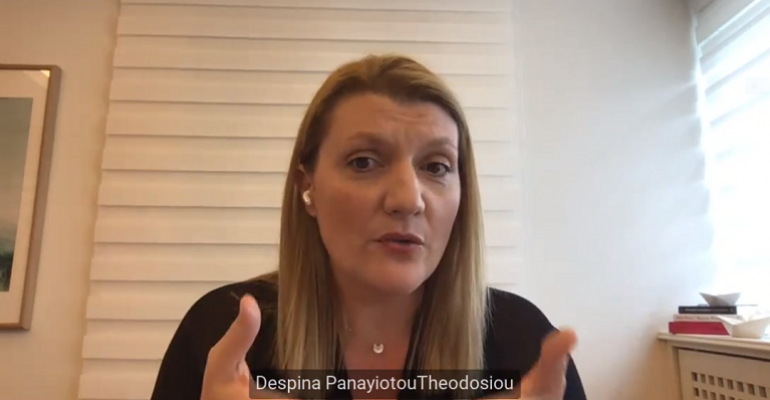This was one conclusion reached by participants at a lively Seatrade Maritime News webinar yesterday.
Titled “Why Digital is the Way Ahead for Shipping” and sponsored by ABS, the class society’s senior vp for digital solutions, Kash Mahmood, revealed that 56% of its maritime clients are currently testing smart asset monitoring. “We are seeing technology becoming cheaper and more accurate,” he said. “The barrier to entry is becoming lower.”
Despina Panayiotou Theodosiou, Tototheo maritime ceo and president of WISTA International, believes that the ability of shipping companies to weather the onslaught of Covid-19 is linked directly to their involvement and adaptation to the digital ecosystem.
“We have seen some companies perfectly able to handle the pandemic,” she said. “This difference has come in part on how ready these companies were to digitalise.
“Many seafarers experience lockdown conditions as part of their working lives, but what they have not signed up for is the inability to reach out to family and friends; they did not sign up for less than what they would have if they worked in an office on shore. Having that connectivity is key and crew welfare is linked with this, giving access to communication with family and friends, as well as mental and physical healthcare, and training.
“We need to stop talking about shipping’s digital transition as though it’s about to start; we have been seeing it advance for a number of years now,” she added. “We need to talk about how those who are still cautious will see gains.”
Mark O’Neil, president and ceo of Columbia Ship Management (CSM), commented that “optimisation is the way forward, and digitalisation is only one aspect of that. Shipping is fundamentally a people business, and we’re seeing more and more that it will stay that way.”
O’Neil described how these elements have been integrated in the setting up of the company’s new 24/7 control centre employing four master mariners. The resource is intended not only for the company’s managed fleet, but also for third-party owners and operators, he said.
For CSM, one of the results of this people-centred approach has been its successful tackling of the crew change crisis. “We have a pool of 15,000 seafarers, and we have less than 70 who haven’t been rotated,” O’Neil said. “This logistics effort has been facilitated by digitalisation [and] optimising crew rotations, which has been of vital importance in crew welfare.
Clara Wahnich, digital innovations partnership lead at Inmarsat, pointed out that crew welfare communications often prove a challenging sell because “ship operators do not always see a direct return on investment with crew welfare solutions.”
However, she said, there is clear evidence that investment in satcoms for the sake of crew does justify the expense. “We can establish dedicated bandwidth for internet-of-things (IOT) and operational uses, and a separate ecosystem for crew welfare, including communications and training. This is done through a separate connection on top of the primary FleetBroadband, which means very little administrative headache for the ship operator.”
Improved satcoms connectivity is essential to accommodate advances in interactive training and Wahnich commented: “You would perhaps not expect to see Inmarsat getting involved in training. But training at sea is becoming more critical, so we are trying to enable this to happen in a cost-efficient way.”
Recently, training provider Tapiit became an Inmarsat Certified Application Provider (CAP), launching a new mental health training initiative for seafarers. “You could in theory download a video at shore and watch it at sea,” said Wahnich. “However, we find there is a distinct need for live classes where students can ask questions and receive feedback.”
For now, the way to unlock digitalisation’s true potential, O’Neil suggested, is to keep things simple, and to create products tailored to customer needs, rather than expecting them to alter their operations to fit with a new type of advanced software. “We had a customer say to us: I have a need for a Performance Optimisation Control Room, but I am dealing with Covid day in day out, and haven’t got the time to implement this. Frankly, tech companies need to dumb this down to allow companies to quickly utilise and train. Digitalisation has to integrate into existing operations, rather than becoming an additional layer of operations.”
Copyright © 2024. All rights reserved. Seatrade, a trading name of Informa Markets (UK) Limited.
Add Seatrade Maritime News to your Google News feed.  |
